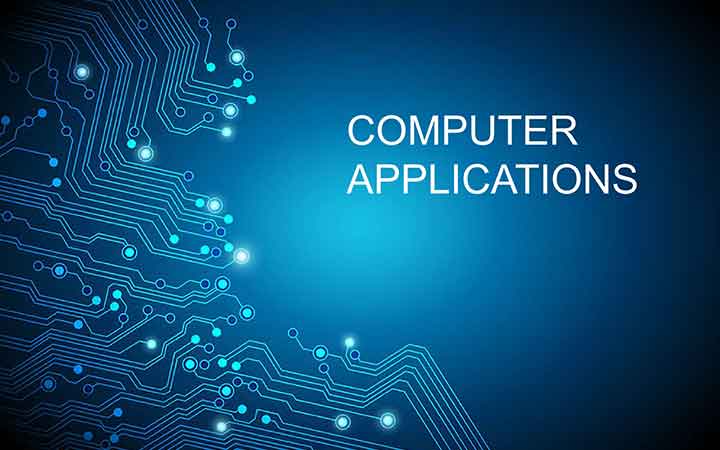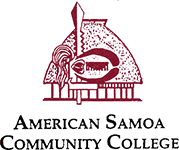American Samoa Community College MOODLE
15 Week Session
This course introduces basic concepts and components of a microcomputer system, the Windows operating system, and popular application software. Topics include care of equipment, system management, Windows and basic network commands, and fundamentals of electronic mail, Internet, word processing, image processing, and spreadsheet software. Laboratory work includes graphical user interface (GUI) and Internet exercises, word processing, and spreadsheets basics to Microsoft Office User Specialist (MOUS) standards. Note: 2 lecture credits, 1 lab credit)
- Teacher: Juliet Fung Chen Pen
This course introduces basic concepts and components of a microcomputer system, the Windows operating system, and popular application software. Topics include care of equipment, system management, Windows and basic network commands, and fundamentals of electronic mail, Internet, word processing, image processing, and spreadsheet software. Laboratory work includes graphical user interface (GUI) and Internet exercises, word processing, and spreadsheets basics to Microsoft Office User Specialist (MOUS) standards. Note: 2 lecture credits, 1 lab credit)
- Teacher: Juliet Fung Chen Pen
This course introduces basic concepts and components of a microcomputer system, the Windows operating system, and popular application software. Topics include care of equipment, system management, Windows and basic network commands, and fundamentals of electronic mail, Internet, word processing, image processing, and spreadsheet software. Laboratory work includes graphical user interface (GUI) and Internet exercises, word processing, and spreadsheets basics to Microsoft Office User Specialist (MOUS) standards. Note: 2 lecture credits, 1 lab credit)
- Teacher: Juliet Fung Chen Pen
This course introduces basic concepts and components of a microcomputer system, the Windows operating system, and popular application software. Topics include care of equipment, system management, Windows and basic network commands, and fundamentals of electronic mail, Internet, word processing, image processing, and spreadsheet software. Laboratory work includes graphical user interface (GUI) and Internet exercises, word processing, and spreadsheets basics to Microsoft Office User Specialist (MOUS) standards. (Note: 2 lecture credits, 1 lab credit)

- Teacher: Reupena Lesā
This course introduces basic concepts and components of a microcomputer system, the Windows operating system, and popular application software. Topics include care of equipment, system management, Windows and basic network commands, and fundamentals of electronic mail, Internet, word processing, image processing, and spreadsheet software. Laboratory work includes graphical user interface (GUI) and Internet exercises, word processing, and spreadsheets basics to Microsoft Office User Specialist (MOUS) standards. (Note: 2 lecture credits, 1 lab credit)

- Teacher: Reupena Lesā
This course introduces basic concepts and components of a microcomputer system, the Windows operating system, and popular application software. Topics include care of equipment, system management, Windows and basic network commands, and fundamentals of electronic mail, Internet, word processing, image processing, and spreadsheet software. Laboratory work includes graphical user interface (GUI) and Internet exercises, word processing, and spreadsheets basics to Microsoft Office User Specialist (MOUS) standards. (Note: 2 lecture credits, 1 lab credit)

- Teacher: Reupena Lesā
This course illustrates computer capabilities within an employment setting. It will focus on solidifying student knowledge of popular Microsoft office applications. Laboratory work includes extensive laboratory assignments using Word Processing, Spreadsheet, and Presentation software to accomplish tasks meeting Microsoft Office User (MOUS) Specialist standards. (Note: 2 lecture credits, 1 lab credit)

- Teacher: Ernie Seiuli
The Introduction to Programming course introduces the students through a study of program specification and design, coding, and understanding of exposing the essential data to the outside world. Topics covered include fundamentals of flowcharts, program solving, and basic concepts of any programming language; variables, Control Structures, Data Structures, Syntax, and Tools. This course will also serve as an introduction to the C++ programming language. The students will learn the basics of C++, including control structures, types, variables, functions, and pointers. (Note 2 lecture credits, 1 lab credit)
- Teacher: Evelyn Fruean
This course will provide basic introduction to all aspects of cyber-security including communications security, network security, security management, legal issues, political issues, and technical issues. The purpose of the course is to provide the student with an overview of the field of information security and assurance. (Note 3 lecture credits)
- Teacher: Evelyn Fruean
